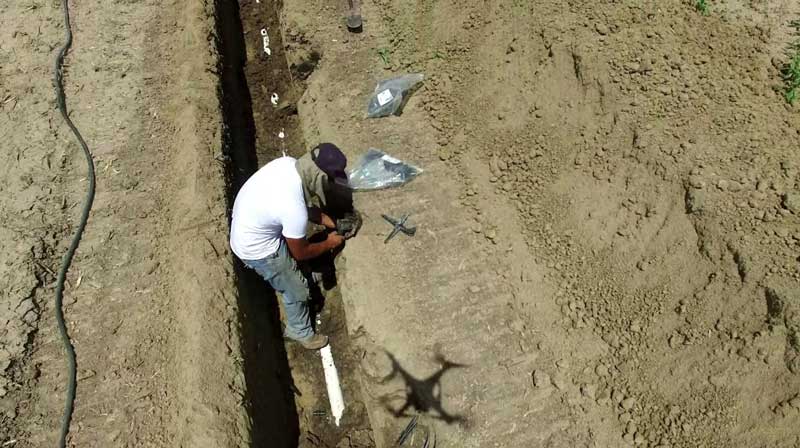The Future of Agriculture: Exploring the Benefits of Sub Surface Drip Irrigation
The future of agriculture is intertwined with advancements in irrigation methods, particularly those that prioritize efficiency and sustainability. A promising strategy is sub surface drip irrigation, a technique that directly delivers water to the root zone of plants. This method not only optimizes water usage but also promotes healthier crop growth and higher yield. In this exploration of the future of agriculture, we delve into the myriad benefits of sub-surface drip irrigation, shedding light on why it holds the potential to revolutionize agricultural practices.
Introduction
The future of agriculture is teetering on the brink of a technologically-driven revolution, with myriad advancements poised to resolve the challenges of food security, sustainability, and efficiency. These challenges, exacerbated by climatic changes and population growth, necessitate the adoption of innovative approaches that can not only meet the escalating demand for food but also ensure the longevity of our natural resources.
One such innovation is sub-surface drip irrigation—a method that is rapidly gaining recognition for its potential to transform agricultural practices. As a departure from traditional methods, sub-surface drip irrigation involves the delivery of water directly to the root zone of plants. This targeted approach minimizes wastage, promotes healthier crop growth, and enhances crop yield, paving the way for more sustainable and efficient agricultural practices. This method holds the promise of redefining the landscape of the agricultural sector, ushering in an era of unprecedented growth and sustainability.

Understanding Sub-Surface Drip Irrigation
Sub-surface irrigation, often abbreviated as SDI, is an innovative irrigation technique where water is delivered directly to the root zone of plants through a network of buried tubes or drip lines. These lines are meticulously placed below the soil surface, ensuring targeted delivery of water and nutrients. This precision not only reduces water wastage but also enhances nutrient absorption, promoting healthier and more robust crop growth.
When compared to traditional irrigation methods—like surface irrigation, sprinkler systems, or furrow irrigation—SDI stands out for its efficiency and sustainability. Traditional methods often lead to significant water loss due to surface runoff, deep percolation, or evaporation. However, SDI, by delivering water directly to the root zone, minimizes these losses, resulting in greater water-use efficiency. Additionally, the method alleviates issues like soil erosion and nutrient leaching, common in conventional irrigation techniques, thereby contributing to sustainable agricultural practices.
Benefits of Sub-Surface Drip Irrigation
Sub-surface Drip Irrigation (SDI) brings about a wealth of benefits that address the pressing issues of water scarcity, sustainability, and food security.
- Improved Water Use Efficiency: SDI delivers water directly to the root zone, significantly reducing losses due to evaporation, deep percolation, and surface runoff. This precision in water delivery enhances water use efficiency and makes SDI a sustainable choice in regions with limited water resources.
- Enhanced Crop Yield and Quality: With water and nutrients directly delivered to the root zone, plants can optimize their nutrient uptake, leading to healthier growth and improved yields. The targeted delivery also results in uniform crop growth, thereby enhancing the overall quality of the produce.
- Reduced Soil Erosion: Since SDI minimizes surface water runoff, it significantly reduces the risk of soil erosion. This is particularly beneficial in regions with loose or sandy soil where erosion can be a significant issue.
- Lower Labor and Energy Costs: SDI systems require less labor for operation and maintenance compared to traditional irrigation systems. Moreover, since they operate at lower pressures, they consume less energy, contributing to further cost savings.
- Minimal Weed Growth: As water is delivered directly to the crops’ root zone, surface areas remain dry, inhibiting weed growth. This can reduce reliance on chemical weed control methods, promoting an environmentally-friendly approach to farming.
In conclusion, the advantages of sub-surface drip irrigation make it an attractive and revolutionary solution for the future of sustainable agriculture.
Challenges and Solutions in Implementing Sub-Surface Drip Irrigation
Despite the numerous benefits of Sub-Surface Drip Irrigation (SDI), its implementation is not without challenges. A few of these include the initial high cost of installation, complexity in management, potential for root intrusion into drip lines, and the risk of emitter clogging.
- High Installation Costs: The upfront cost of installing an SDI system can be substantial, potentially discouraging small-scale farmers. However, this initial investment can be offset by the long-term gains in water efficiency, increased yield, and reduced labor and energy costs. Government subsidies and low-interest loan schemes can be effective strategies to help farmers overcome this financial hurdle.
- Management Complexity: SDI systems require careful planning, regular maintenance, and skillful management to function optimally. Investing in farmer training and education can equip farmers with the necessary skills to effectively manage these systems.
- Root Intrusion: In some cases, plant roots may grow into the drip lines, causing blockages. The use of root deterrents or pressure-compensating drip lines can effectively mitigate this challenge.
- Emitter Clogging: Soil particles, organic matter, or algae can clog the emitters, disrupting the system’s functionality. Regular system maintenance, filter installation, and the use of treated water can help prevent clogging.
In conclusion, while there are challenges associated with the implementation of SDI, they are not insurmountable. With careful planning, regular maintenance, and the use of appropriate strategies, SDI can be a game-changer in the field of sustainable agriculture.

Environmental Impact of Sub-Surface Drip Irrigation
Sub-Surface Drip Irrigation (SDI) significantly contributes to environmental sustainability. Primarily, it reduces water consumption, a pressing environmental issue in many regions. As SDI delivers water directly to the root zone of crops, it minimizes losses due to evaporation and surface runoff, preserving valuable water resources.
Moreover, SDI minimizes soil erosion, a common environmental issue associated with conventional irrigation techniques. With reduced surface water runoff, the risk of soil erosion diminishes, preserving soil structure and preventing degradation of agricultural land.
In addition, the targeted water delivery approach of SDI results in less weed growth. This can decrease reliance on chemical weed control methods, reducing the amount of herbicides that infiltrate into groundwater, thereby mitigating water pollution.
Finally, SDI can contribute to reduced energy consumption. As these systems often operate at lower pressures than traditional irrigation methods, they require less energy, contributing to a lower carbon footprint.
In conclusion, the environmental impacts of SDI are overwhelmingly positive, making it a highly eco-friendly agricultural practice.
Future Possibilities of Sub-Surface Drip Irrigation
Sub-Surface Drip Irrigation (SDI) holds immense potential for the future of agriculture. As the global population continues to rise, the demand for food will increase, concurrently escalating the need for efficient and sustainable farming practices like SDI.
In the face of changing climate conditions and water scarcity, SDI could be a solution to maintain agricultural productivity. Advancements in technology could further enhance the efficiency of SDI, with possibilities for integrating automation and smart technologies. These could provide real-time monitoring and precise control over water and nutrient delivery, optimizing usage and further increasing crop yields.
Moreover, research is underway to explore the potential of SDI in unconventional areas, such as rooftop farming and urban agriculture. Such applications could revolutionize food production in urban settings, reducing the environmental impact of transporting produce and providing fresh, local produce.
Finally, the proliferation of SDI could encourage a shift towards more sustainable farming practices worldwide. By demonstrating the benefits of water conservation and reduced chemical usage, SDI may influence agricultural policies, leading to more widespread adoption and promoting global sustainability.
In conclusion, SDI has considerable potential for the future of agriculture, and further advancements in technology and applications could make it a crucial player in achieving sustainable development goals. Overall, the benefits of SDI far outweigh any challenges associated with its implementation, making it a promising solution for efficient and eco-friendly farming. Let us embrace this innovative irrigation technique to secure a sustainable future for agriculture and the environment.
